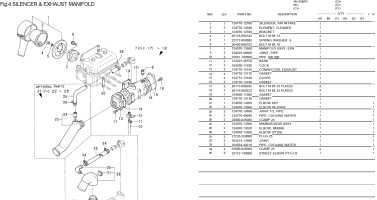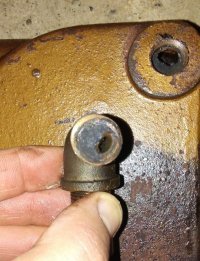2qm15. Has always run like a champ.
On Friday I started out on a weekend adventure to Moback Bay. Spent hours prepping the boat, bringing all the stored stuff back to the boat. Headed off Friday morning. The wind was steady and strong and on the nose on the way to the bay from Hampton. I was motoring at 2200 to 2400 rpms going between 4.7-5.5 knots. There was all kinds of Navy and bridge tunnel expansion activity. So I was motoring for about 50 minutes, which I rarely do. My temp gun showed the usual places I check were within a couple of degrees of normal for my engine. (and I take temps after I sail which is never pushing the engine). The manifold was about 10 degrees higher than normal right after the alarm went off and I shut things down. 134, when it's usually high teens to 120 something. Non of this seems out of the ordinary.
Water flow out the back seemed normal. No smoke, a little vapor as usual. Water temp was slightly warm to the touch. Nothing in the strainer. Dejectedly, I headed back given the conditions. I sailed to about .2 mile to my slip and motored back in. No alarms.
Boat yard suggested I try some barnacle buster, which I did. Nothing visible came out. What might be next steps to check? The sensor is fairly new and looked solid, no corrosion etc.
Thanks!
Jay
On Friday I started out on a weekend adventure to Moback Bay. Spent hours prepping the boat, bringing all the stored stuff back to the boat. Headed off Friday morning. The wind was steady and strong and on the nose on the way to the bay from Hampton. I was motoring at 2200 to 2400 rpms going between 4.7-5.5 knots. There was all kinds of Navy and bridge tunnel expansion activity. So I was motoring for about 50 minutes, which I rarely do. My temp gun showed the usual places I check were within a couple of degrees of normal for my engine. (and I take temps after I sail which is never pushing the engine). The manifold was about 10 degrees higher than normal right after the alarm went off and I shut things down. 134, when it's usually high teens to 120 something. Non of this seems out of the ordinary.
Water flow out the back seemed normal. No smoke, a little vapor as usual. Water temp was slightly warm to the touch. Nothing in the strainer. Dejectedly, I headed back given the conditions. I sailed to about .2 mile to my slip and motored back in. No alarms.
Boat yard suggested I try some barnacle buster, which I did. Nothing visible came out. What might be next steps to check? The sensor is fairly new and looked solid, no corrosion etc.
Thanks!
Jay



